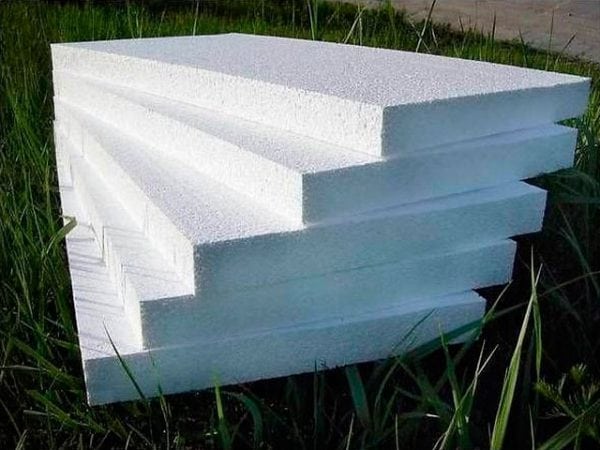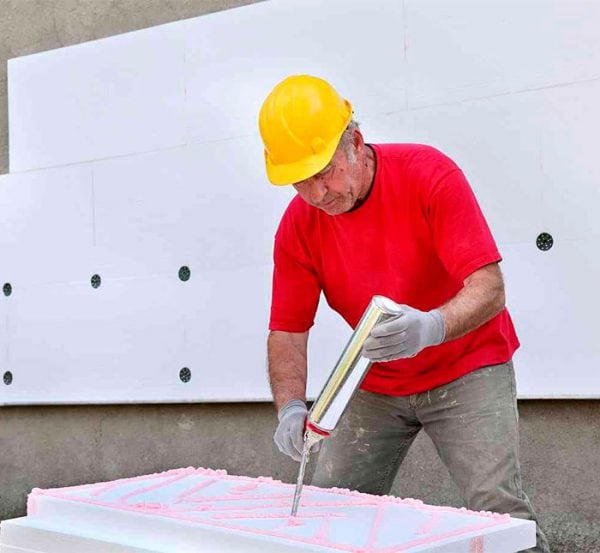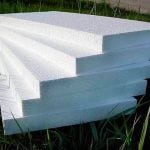Recently, the facing of the outer walls of buildings made of foam has become increasingly popular. Such events provide an opportunity not only to make external repairs, but, more importantly, to increase the heat-saving properties of the structure. In order for the work to warm the external walls to go well, you need to know which primer is suitable for polystyrene foam.

Since the work is completely carried out on the street, it is necessary to use building and finishing materials of appropriate quality and purpose. Installation and finishing solutions must have certain indicators of operating temperature, moisture and heat resistance, strength and durability. That is, their task is to provide reliable surface protection under the influence of atmospheric phenomena.
Note that specialists in construction and repair issues certainly recommend using primer mixtures at intermediate stages. What and how to primer a foam surface, more on this later.
to contents ↑Types of primers
Primer mixes differ in quality (composition), properties, purpose. There are universal solutions suitable for different types of work, and for surface treatment of various structures. Basically, all formulations are divided into reinforcing and adhesive.
- Reinforcing agents are used on porous structural surfaces. The main properties of such solutions are deep penetration into the base layers (up to 10 cm deep), the formation of a firmly protective film after drying.
- Adhesive solutions are applied to surfaces in front of plaster and other types of decorative cladding in order to improve adhesion of materials. That is, here the primer serves as an intermediate layer that improves the physical and technical quality of the finish.
The composition of the primer is alkyd, acrylic, glyphthal, phenolic, polystyrene, polyvinyl acetate, perchlorovinyl. Both the performance of the solution and the possibilities of its application already depend on the composition.
For facade work, a material with the following properties is used:
- increased water resistance;
- moisture resistance;
- frost resistance;
- heat resistance;
- deep penetration, but also excellent grip;
- chemical inertness;
- biological inertness;
- ability to resist and neutralize efflorescence.

For the initial surface treatment before applying the subsequent coating, a primer is simply necessary. Decorative wall cladding will subsequently hold much better. In addition, deeply penetrating primer mixtures extend the durability of the base materials and improve their technical characteristics.Another useful property is the reduction in the consumption of subsequent solutions applied over the soil (glue, putty, paint, varnish).
to contents ↑Primer for wall insulation with foam
Before you mount the foam on the walls, you need to do a series of preparatory work. Be sure to clean off the old decorative coating, whatever it is. Check surface for damage.
It is further recommended to go through a deep penetrating primer. Such preparatory work is especially important in the reconstruction of the facades of old buildings. Thus, not only the structure of the materials of construction is compacted, but also protection against further destruction will appear. Dense in structure material (for example, brick) is primed once, porous mineral materials - from two times.
After the primer has dried, seams and cracks are closed. Next, the starting profile is set and you can proceed to gluing the insulation boards (polystyrene). When all foam boards are glued, they are additionally fixed in the corners with dowels (after the glue solution is almost completely dry). Then a layer of reinforcing mesh is attached, which provides protection to the coating from destruction. All this is covered with a layer of adhesive solution and left until tomorrow. The next day you need to close up the bumps.
Before plastering, the surface is ground and primed (how to properly prime the walls with plaster, you can read here) A mixture is used that increases the adhesive properties of finishing materials. Further the leveling layer of plaster is imposed. Before grouting, it should dry (1-4 days). Grouting is done until a perfectly smooth surface is formed.
But that is not all. Now you need to apply a decorative (finishing) finishing material. To finish the finish well, we again use the primer. Depending on what the decorative coating will be, the composition of the primer mixture is selected.
In this way, the priming of the foam occurs during the facade insulation of the walls. By the way, in some cases, the foam insulation is not installed outside, but indoors. This has its own characteristics, for example, mounting mixtures and solutions for intermediate work should be selected taking into account the admissibility of use.
to contents ↑Rules for applying a primer mixture
- The mixture used must be diluted and mixed thoroughly. The breeding instructions are indicated on the packaging.
- Application can be done with a paintbrush or regular brush. Sometimes by roller or by spraying. After completing the work, the tools must be cleaned.
- The primer should dry well. Dry, it will become resistant to mechanical damage.
- Do not neglect personal protective equipment.
Observing the manufacturability of the finishing work, the foam wall insulation will fulfill its protective and insulating function for a long period. Again, cosmetic repairs and restoration of the facade will not be needed for a long time.





